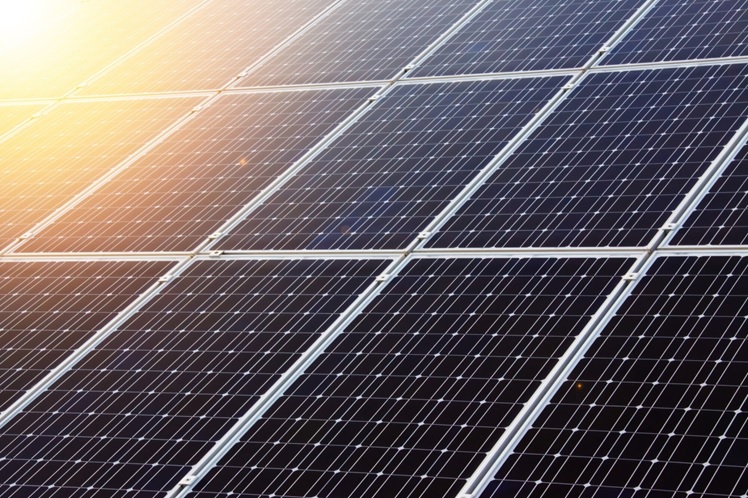So far, over 18 million homes in the U.S. have made the switch to solar. This move is in line with the federal and state government’s commitment to reducing carbon emissions.
Solar energy offers undeniable environmental benefits and huge savings on your electricity bills, but some homeowners find the high upfront costs off-putting. The more solar panels you need, the more you’ll pay to get your solar system up and running.
Are you keen to get on board with solar but wondering, ‘How many solar panels to power a home like mine?’. Keep reading for help figuring it all out.
Is Your Home Suited to Solar?
Solar energy is a fantastic way to make a positive impact on the world, but it isn’t a good fit for every homeowner. These are the things to consider before you install a solar power system:
Your Budget
Unless you’re prepared to invest your life’s savings on solar panels and installation costs, you’ll need to pay for your solar set-up with a solar loan.
Technically, your monthly loan installment would replace your energy bill for however many years it takes for you to pay it off. You need to make sure there’s room in your monthly budget for this extra expense.
Your Electricity Bill
Most homeowners install solar so they can cut down on their monthly energy expenses. So, it’s pointless installing solar energy if your monthly loan repayments exceed your usual electricity bill.
Unless you usually pay more than $75 monthly to the power company, you won’t save much by installing solar.
The State of Your Roof
Solar panels last at least 20 years. If you’re due for a roof replacement before then, it’s best to do it before you install solar panels.
If you don’t, you’ll need to pay for a solar contractor to remove and reinstall your solar panels when you upgrade your roof.
Remember, if your home isn’t a good candidate for solar, you can still take advantage of green energy with a solar power-purchase agreement via a participating power company.
Preparing to Install Solar Power for Home Use
The more electricity you use at home, the more solar panels you need. It makes sense to cut down on your home’s electricity consumption before you start asking for estimates from solar power companies.
There are a few things you can do to achieve this, namely:
LED Lights
Switch out all your halogen globes for energy-saving LED lights. These lights emit only 10% of their energy in the form of heat, so they use 12x less electricity than halogen lights do.
Gas Appliances
Heating appliances like ovens and water heaters are the most power-hungry items in any household. So, it makes sense to replace these with alternatives if you want to cut down on the number of panels you need to power your home.
Gas-powered water heaters and ovens are the best alternatives if you want to cut down on your home’s energy demands.
Smart Technology
Smart home hubs allow you to manage your energy consumption in several ways. You can set limits on your energy consumption and adjust your thermostat according to your seasonal needs.
Motion sensors can switch off lights and climate control in unoccupied rooms, too.
Factors That Affect Solar Panel Efficiency
Numerous factors may influence how much power solar panels will provide for your home. These include:
Your Location
Solar panels continue to generate electricity during daylight hours regardless of the weather. Solar panels produce about 10% less electricity in low light conditions.
So, if you live in an area that experiences long bouts of cloudy weather, you’ll need more solar panels to power your home.
Types of Solar Panels
There are two main types of residential solar panels, each offering varying degrees of efficiency. These are:
- Monocrystalline solar panels
- Polycrystalline solar panels
Monocrystalline panels are the more expensive option, but they produce more electricity in low light than polycrystalline panels do.
Each solar energy equipment supplier stocks different brands and accessories, and these can also impact the efficiency of a system. It’s best to consult with a few solar contractors in your area to figure out what works for you according to what they have in stock.
Solar technology is advancing rapidly concerning increased output in low light conditions, so ask about the latest advances while shopping around.
Calculating How Many Solar Panels to Power a Home
There is a simple formula to help you calculate how many solar panels you require. All you need is your electricity bill and knowledge of the average peak sunlight hours in your area.
You can look up the average amount of productive sunlight hours in your area on a solar insolation map. You’ll find your monthly electricity consumption listed on your electricity bills.
Add up all the kilowatt-hours you used over the year to get your annual consumption and divide this figure by 365. Most homes in the U.S. use about 29 kWh per day.
Each solar panel has a rating in watts. This indicates how much power they generate every day, and is usually around 325 watts per hour, per panel.
You can divide your daily energy use by the number of peak sunlight hours in your area to work out how many watts you need per hour.
You can figure out how many panels you need based on this. For instance, if you need 29 kWh per day divided by four hours, you need enough panels to generate 7.25 kW or 7,200 watts per hour.
That works out to 22 x 325 W solar panels. Most homes need between 20 and 25 solar panels to meet their energy needs.
If you invest in more powerful panels, you’ll need fewer panels, but they’ll cost more per panel. It’s best to get a solar installer to help you with this mathematical juggling based on your exact needs.
Create Unique Spaces
Now that you’re familiar with calculating your need when it comes to how many solar panels to power a home, you can take confident steps toward implementing sustainable initiatives in your lifestyle.
Apart from solar, there are many ways you can go green in your every home improvement endeavor. Browse our blog for more inspiration and check back regularly for updates.








